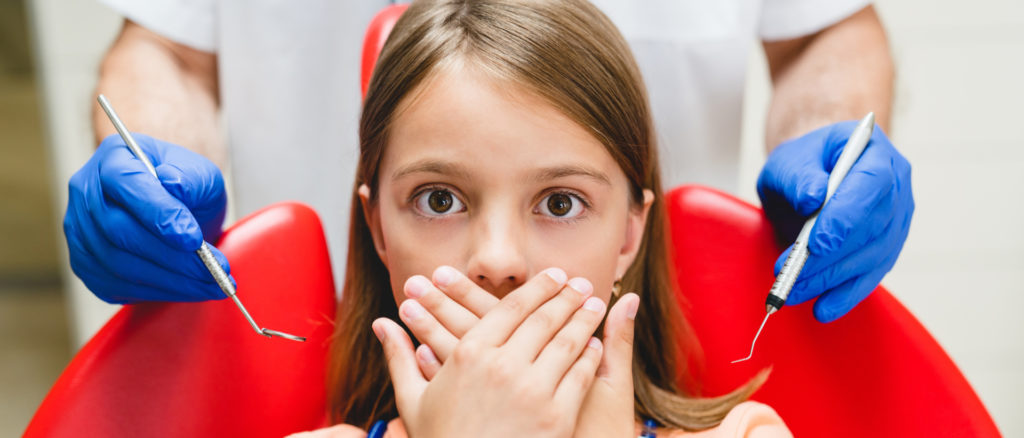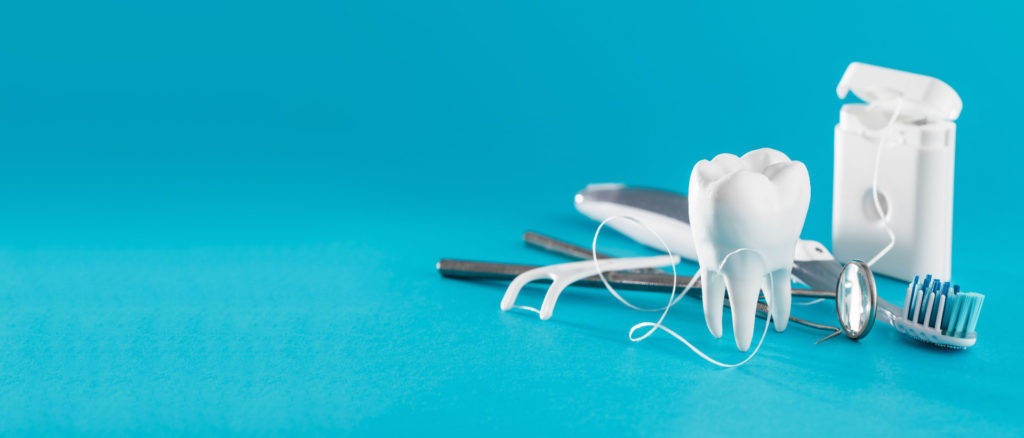 31 Aug 2022
31 Aug 2022
A World Without Fear
A world without fear sounds like the perfect place to live. Imagine being able to confidently pluck spiders from the bathtub or enjoy the view from the 25th-floor balcony without feeling dizzy.
But without fear, it is doubtful our ancestors would have climbed the evolutionary ladder so skilfully.
Missing the fight-or-flight response – which releases a flood of stimulating adrenaline into the body – our species would not have been equipped to defend ourselves or run away from all kinds of threats.
For the most part, snakes, spiders, heights and confined spaces can all be avoided for a lifetime with relative ease.
Unfortunately, the same can’t be said of the dentist. Just a few missed appointments can lead to major health issues.
This is a huge problem for dental phobics. In studies the world over, those who report the highest levels of dental anxiety also have the worst health.
Research has uncovered a vicious circle at the root of this link, which professionals have named the cycle of dental fear.
In the first stage of the cycle, fear leads to putting off appointments, which in turn leads to dental problems developing.
In the second phase of the cycle, the patient is forced to seek treatment when symptoms become unbearable. This makes the cure all the more unpleasant, creating more negative associations which feed back into and amplify the original fear.
Studies also note that feelings of embarrassment about oral health can reinforce avoidance.
The Causes of Dental Phobia
The real-life patient stories on this site provide some illuminating examples of some of the most common causes of dental phobia.
Most often, fears are rooted in unpleasant experiences, with many phobics enduring dental trauma early on in life.
Older generations who last had treatment long ago when dental techniques and attitudes towards phobia were less sophisticated may harbour particularly negative and unpleasant memories.
Carol Breedon’s experience at the hands of a school dentist many years ago is typical. She told us: “Going to the school dentist in 1951, standing in line with about thirty girls from my class, the nurse would pull each girl’s head back by pulling the hair.
“The dentist, smoking a cigarette and wearing a dirty blood-stained apron, would make you open your mouth by pulling at our cheeks and chin.”
It hardly needs pointing out that a dentist treating patients in such a way in this day and age would be immediately struck off.
Research has also found that phobia can be passed on from parent to child. Not only are children susceptible to adopting their parents’ attitudes towards the dentists, there is also a less well-understood genetic factor at play. This research also showed that heritability is more common in girls than boys.
Bizarrely, dental phobia could also be more prevalent in redheads. The reason is the MC1R gene which appears to make redheads more sensitive to pain, sometimes requiring 10-15% more anaesthetic to get numb than those without the gene.
The genetic factor is only just beginning to be understood and acknowledged by the medical community – so it’s not difficult to understand why redheads may have experienced more than their fair share of negative or painful experiences.
Fair-haired Marilyn Emes developed a lifelong dental phobia after her dentist had trouble anaesthetising her properly. “The final bad experience that I had, at the age of 17, was when I had to have a wisdom tooth extracted,” she said.
“The dentist was not able to get me numb despite firing in injection after injection. Nothing seemed to numb the pain, and in the end, I pulled the drill out of my mouth. He warned me if I didn’t behave, I would end up cutting my face open, and this filled me with such fear that I’ve never really forgotten it.”
Trust and communication are other recurring themes in our patients’ stories. Ian Moffat tells how a language barrier between patient and dentist caused his confidence to crumble. He said: “This made it slightly awkward from the first moment.
“That first course of treatment was horrendous. No conversation was made, and I was treated like just another patient rather than an individual. All I knew was that I was getting fillings – I wasn’t even sure which teeth were getting work done..”
Breaking the Cycle
There are two approaches to living with dental phobia. The first of these, we have already seen at work in the cycle of dental fear. It means avoiding the dentist, putting up with problems until they become too severe or painful to ignore any longer and finally reinforcing fears further through prolonged treatment.
The second strategy is to break the cycle once and for all. It may not be easy, but doing so can save you from a lifetime of worry and poor dental health.
Remember our patient stories from earlier?
Carol Breedon, the patient who recounted her experience at the hands of a school dentist in the 1950s, said the experience left her feeling frightened, faint and sick on subsequent visits to the dentist.
But her story has a happy ending.
While she wasn’t entirely over her fear when speaking to dentalphobia.co.uk, she said that finding a team she could trust in the form of Lee and Steve at Winchester’s St Lawrence House, made all the difference.
Carol said: “My phobia is exactly as before, except I will go straight away to Lee and Steve because I believe and trust them.”
Ian Moffat, for whom a communication barrier with his dentist led to a breakdown in trust, also said that his phobia had not disappeared completely. However, he was able to put his trust in dentist Kai Patel. “I still feel nervous and a little panicky, but I am also put at ease in the knowledge that I won’t get told off for asking for a break to compose myself,” Ian said.
“I regret that I let my teeth and my mental state regarding oral hygiene get to the point I let it. If I had confronted the issue as it was developing, I could have saved myself from some of the worst pain I’ve ever felt in my life!”
So what changed?
Both Carol and Ian found dentists who were sympathetic and willing to listen to their concerns – a crucial step in breaking the cycle of dental fear.
Overcoming Your Fears
If like Carol, your last dental appointment was decades ago, you may be surprised at how dramatically things have changed. Smoking dentists in blood-stained aprons thankfully died out long ago.
And some modern practices feel more like luxurious spas than the cold, clinical environments of old.
Treatments have changed, too. Numbing wands and analgesic gels are slowly replacing anaesthetic needles. Procedures are gentler all around and gone are the days when phobics were simply dismissed as ‘soft’.
Both Carol’s and Ian’s cases highlight how finding a sympathetic dentist is crucial to beating fear. They were able to talk about their fears and begin designing a strategy for rebuilding confidence.
In Ian’s case, this took the form of a hand signal to let his dentist know when he was feeling overwhelmed and needed a break. Others may choose to listen to relaxing music, take a friend along for support or distract themselves with a crossword puzzle – the choice is yours.
If you’re ready to finally get much-needed treatment, use our Dentist Finder to find a Phobia-Certified dentist in your area.
1) Themessl-Huber M, Freeman R, Humphris G, MacGillivray S, Terzi N (March 2010). “Empirical evidence of the relationship between parental and child dental fear: a structured review and meta-analysis”. International Journal of Paediatric Dentistry.
2) Ray J, Boman UW, Bodin L, Berggren U, Lichtenstein P, Broberg AG (March 2010). “Heritability of dental fear”. Journal of Dental Research




